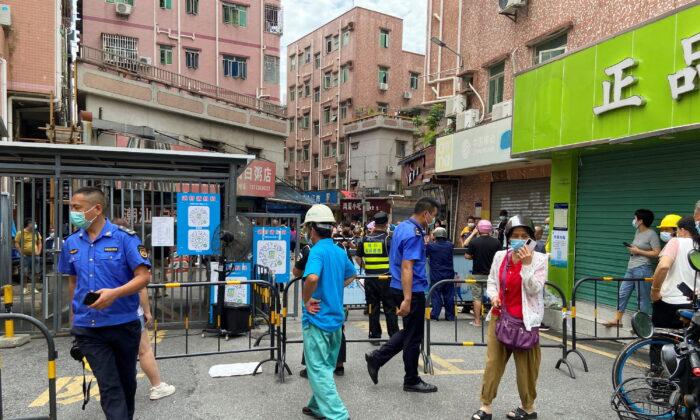SHENZHEN, China—Authorities in China’s southern city of Shenzhen shut the world’s largest electronics market of Huaqiangbei and suspended service at 24 subway stations on Monday in a bid to curb an outbreak of COVID-19.
Three key buildings in the sprawling area, comprised of thousands of stalls selling microchips, telephone parts, and other components to manufacturers, will stay closed until Sept 2.
Local community officials confirmed Monday’s closure to Reuters, while three people working there said building managers had told them to work from home.
Subway services at 24 stations in the central districts of Futian and Luohu were also halted, according to official local media.
In Futian, the seat of the city government, officials announced that cinemas, karaoke bars, and parks would be closed and large public events cancelled until Sept 2.
COVID-19-related border closures have hurt Huaqiangbei, which before the pandemic bustled with foreign entrepreneurs looking to source components in China.

On Monday, the tech hub of nearly 18 million people reported nine symptomatic and two asymptomatic cases from testing the previous day.
COVID-19 testing has become a feature of daily life in the city, with most public spaces and offices needing proof of a test within 48 hours for entry, or within 24 hours in areas deemed high risk.
While the city has avoided blanket closures since a week-long lockdown in March, residents of individual compounds have undergone week-long quarantines when positive cases have been detected.
On Monday morning Wanxia urban village, which provides cheap accommodation to thousands of low-wage workers like delivery drivers and laborers, was sealed off as a COVID-19 measure, though no positive cases were reported there.

China reported 1,696 new COVID-19 infections on Aug. 28, of which 352 were symptomatic and 1,344 were asymptomatic, the National Health Commission said on Monday.
The actual number of COVID-19 cases may be much higher. China’s COVID-19 data is difficult to verify, as the Chinese regime routinely suppresses or alters information.





